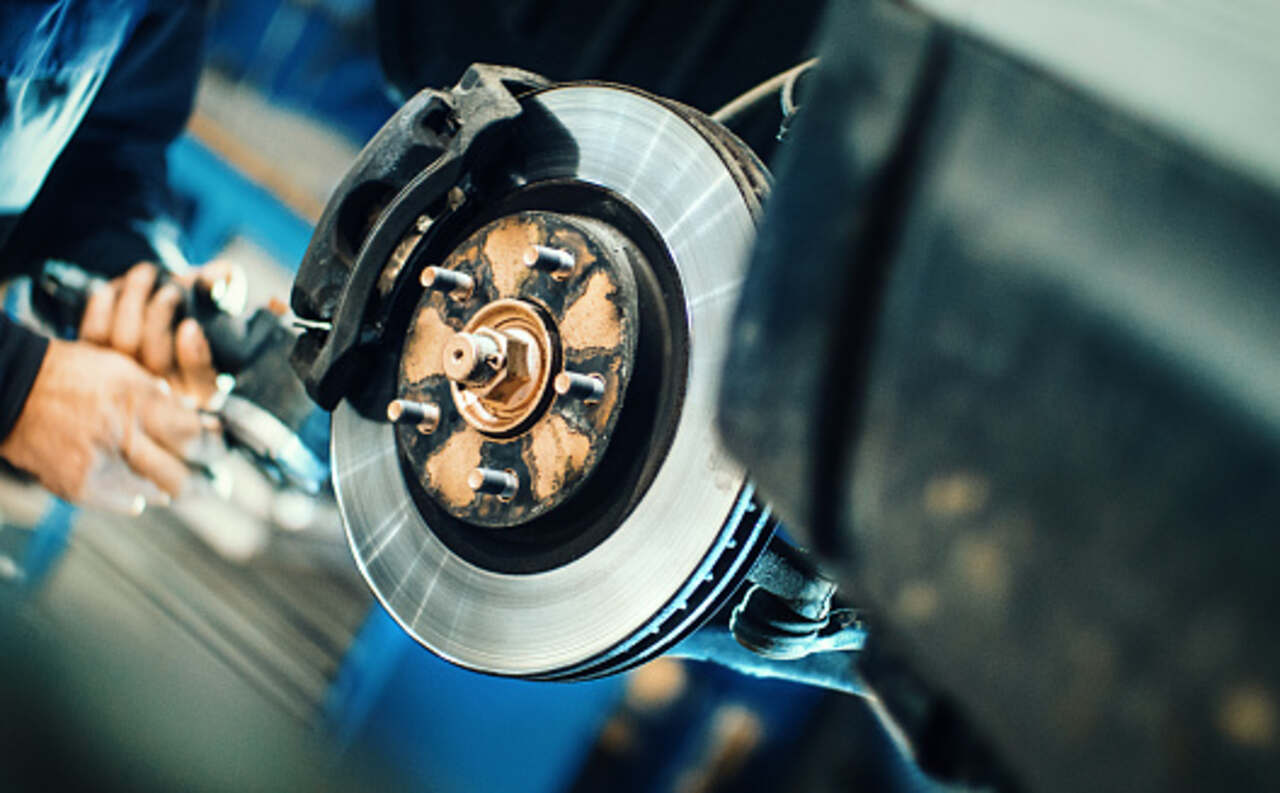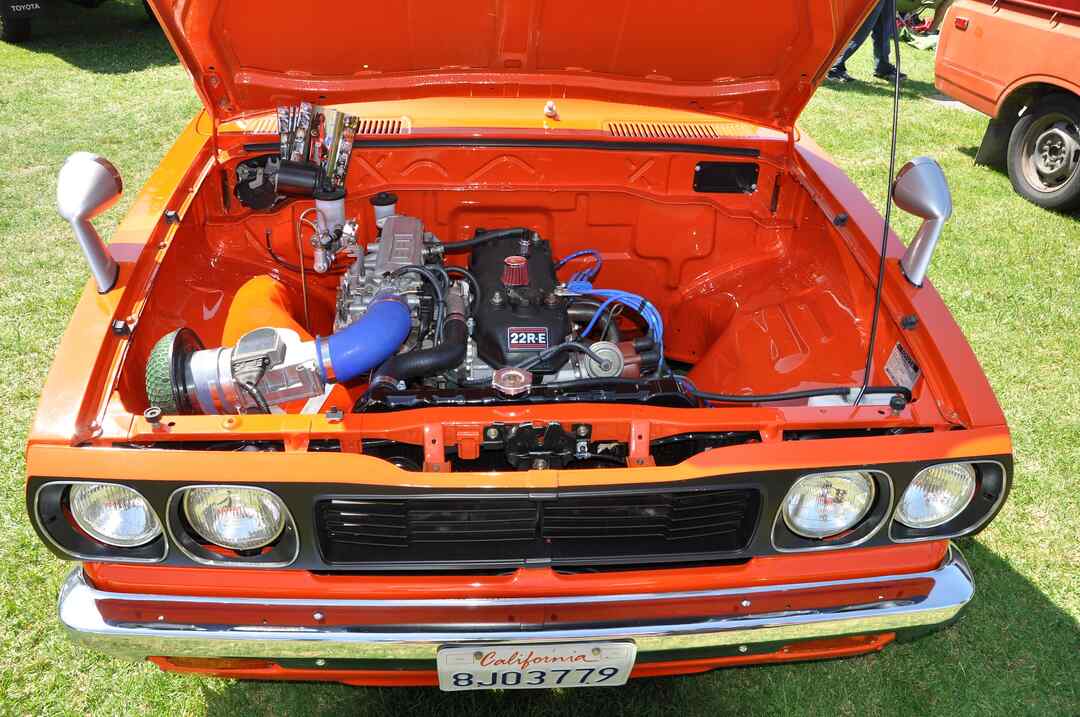When traveling at high speeds, stopping a tow truck and trailer that weigh thousands of pounds requires a lot of force. You can’t rely only on the braking system of the car you’re towing. To properly stop your trailer, you’ll need a full braking system. The towing vehicle’s hitch should support no more than 12–15 percent of the trailer’s weight. In this post, we will discuss everything that you need to know about service trailer brake system.
What Does It Mean To Do Braking System Service?
Trailers of semi-trucks and other big vehicles need a specialized braking system called a service trailer brake system. An air compressor provides the force necessary for this service braking system to function. Each trailer on a multi-trailer vehicle may have its own air pump to maintain the system, but in most cases, the air is piped from the vehicle to each trailer through an airline.
Towing a Trailer? Here Are Some Brake Options
Surge Brakes:
Emergency hydraulic brakes are known as surge brakes. The trailer’s own weight acts as the brake, slowing the vehicle’s progress. When the driver of a vehicle applies the brakes, a hydraulic cylinder is pressurized, and the resulting pressure is transmitted to the trailer brakes, slowing the trailer down.
Electric Trailer Brakes:
Electrically coupled trailers have braking systems that use electromagnetic brake drums and link to the tow vehicle electrically. Afterward, stopping is entirely at the driver’s discretion.
It is necessary to have a trailer brake controller installed in the towing vehicle when using an electric trailer braking system.
How The Service Brake System Works
When running a service braking system, brake pressure is modified by opening or closing an air valve. It regulates the flow of air into the cylinder. Trailer brakes are operated by air pressure rather than hydraulic. It is due to the time it takes for hydraulic fluid to get to each braking unit on a semi-truck. Rather than relying on hydraulic fluid to flow to where it’s required, the technology uses compressed air to alter the braking pressure instantly.
The service brakes on semi-tractors and trailers are replaceable since they are all connected by the same airline. The semi-master truck’s cylinder receives air from the compressor, powered by a drive belt or rotary vane motor. Each trailer’s brake system chamber receives compressed air from the master cylinder via airlines.
The trailer’s braking chamber has a one-way check valve, which generates pressure in the system. Each trailer’s 4 wheels have tiny chambers with pistons installed that receive air from the master cylinder via the rear of the check valves. Air pressure develops, pushing the pistons out of their cylinders and onto a brake lining. When the trailer travels downhill, the pressure applied to the lining causes friction, slowing it down and allowing it to halt.
When Do You Need To Service Trailer Brakes?
Keep an eye out for the service trailer brake system message that it’s time to have your trailer brakes checked properly. Any of the following should prompt you to fix your trailer brakes:
- Those brakes on your trailer are not working as well as they once did.
- The brakes are making some odd sounds.
- It feels like the brakes are mushy or not responding properly.
- The brake pedal is almost flush with the ground.
If you see any of these, it’s time to reset your trailer’s braking system. The brakes might be severely damaged if you wait too long.
Turn Off Service Trailer Brake System And Resetting Procedures
Turning off service trailer brake system from working is simple. There are just a handful of actions required to complete the procedure. But you can only accomplish it with the right equipment.
Tools
- The necessary equipment includes:
- Phillips-head screwdriver
- Hammer
- A hunk of wood or a chunk of rock
Steps
Finding an assistant to assist you in your job is essential. The service trailer braking system may be disabled or reset by following these steps:
1. Find the trailer’s adjustment nut
Locating the trailer’s adjustment nut is a high priority. Its normal location is behind the trailer’s brakes in most vehicles. In most cases, you may find this nut near the axle. If you have determined that the adjustment nut is the culprit, go on to the next step.
2. Grab the screwdriver and loosen the locknut.
The trailer brake’s adjusting nut is locked in place by a nut. Here’s a lock nut that has to be loosened using a flathead screwdriver. Quickly moving on to the following step is possible after you loosen this lock nut.
3. Ensure the adjusting nut is turned clockwise
Once the locknut is removed, the adjusting nut may be loosened. Next, spin the nut used for fine-tuning the device clockwise. Keep doing that until it rests snugly against the component’s rear plate. Worries will arise if the nut is over-tightened.
The trailer brake system will be reset by following these three simple actions. However, if this caution continues to display on your dashboard, there may be an issue with the trailer brakes.
Trailer Brake Repair Estimated Costs
Depending on the issue with the trailer’s braking system, you might pay anywhere from zero dollars to five hundred dollars on repairs. You can get by with only a few minutes and a screwdriver if a simple tweak is required. There are, however, other scenarios that will need financial investment to remedy.
A replacement fuse, for instance, may cost anything from $five to $fifteen. You can fix this on your own, too. Once you locate the fuse, you should be able to complete the task in a matter of minutes.
If none of this is the case, it may be time to service the trailer brake system or its components. The total amount needed to replace it will be based on several variables. The first cost is that original equipment manufacturer (OEM) equipment and components are more expensive. It’s also important to think about the car’s type and model since some are much more costly than others to maintain. It’s important to consider not just the service’s cost but also the provider’s location; for example, metropolitan mechanics will charge far more than their rural counterparts.
FAQs
How to reset service trailer brake system?
Wheels must be removed from the service trailer, and an adjustment for the wheels must be located to reset the service trailer’s braking system. Using a screwdriver, secure the wheel adjustment to the brake shoes. Finally, reset the wheels so you can continue rapidly spinning them without hitting any obstructions.
Why does my truck keep saying service trailer brake system?
A blown fuse, faulty brake light switch, or faulty trailer brake control switch is the most likely cause of a service trailer brake system warning. Furthermore, improper wiring is a common cause of this problem.
Conclusion
It is easy for anybody without the mechanical aptitude to reset the service trailer brake system at home. After removing the wheel, you may use a screwdriver or a “star wheel” adjustment to readjust the service trailer braking system.
To use this adjustment, you must squeeze the brakes until you can no longer spin the steering wheel. That’s when you need to take a step backward so the wheel can turn freely again.




